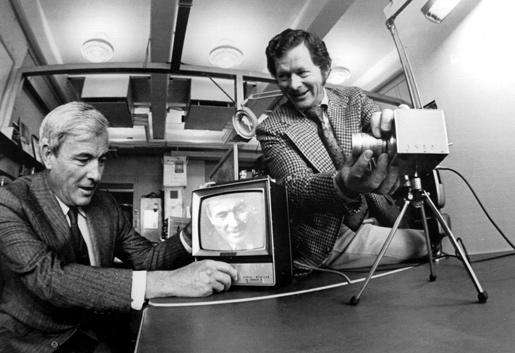Canadian physicist Willard S. Boyle recieved a phone call early this morning with news that would change his life forever: his 1969 co-invention of the charge-coupled device (CCD) with George Smith was being recognized by the Nobel Prize committee with a share of this year's Physics Prize. The CCD device is at the heart of virtually every modern-day camcorder, digital camera, and telescope. Bolye and Smith share this year's Nobel Physics Prize with Charles Kao for his groundbreaking achievements in the development and use of fibre optics.
Using the photoelectric effect theorized by Albert Einstein, the CCD sensor transforms light into electric signals. The team's major hurdle was determining how to gather and read out those signals into a large number of pixels in a short burst of time. The first consumer camera with a CCD was designed in 1981, leading to a revolution in digital photography. CCDs are regularly used in science for high-precision imaging and measurement applications.
Boyle's branch of science is called condensed-matter physics, and it involves the behaviour of materials that are solid - things such as crystals, metals and rocks. In particular, he worked on semiconducting materials such as the element silicon. Boyle's major contributions include the first continuously operating ruby laser, which he invented with Don Nelson in 1962. Ruby was the first material ever made to produce laser light, and ruby lasers are now used for tattoo removal, among other things. Before Boyle's invention, lasers could only give short flashes of light. He was also awarded the first patent (with David Thomas) proposing a semiconductor injection laser. Today, semiconductor lasers are at the heart of all compact disc (CD) players and recorders, but when Boyle patented the idea nobody had even dreamed of CDs.
Born in 1924 in Nova Scotia, Boyle started his career with home-schooling by his mother. He took quickly to formal education in high school and graduated from McGill University in 1950 with a Ph.D. in physics after a stint in the Royal Canadian Navy. He then worked at Bell Laboratories in the U.S. In 1962, Boyle became director of space science and exploratory studies at Bellcomm, a Bell subsidiary providing technological support for the Apollo space program of the U.S. National Aeronautics and Space Administration. While with NASA, Boyle helped work out where astronauts should land on the moon. In 1964 he returned to Bell Labs and switched from research to the development of electronic devices, particularly integrated circuits, which are now essential building blocks in telecommunications and electronics in general. In 1975, Boyle returned to research as executive director of research for Bell Labs' Communications Sciences Division in New Jersey, where he was in charge of four laboratories until his retirement in 1979. Since then he has served on the research council of the Canadian Institute of Advanced Research and the Science Council of the Province of Nova Scotia.
Congratulations, Dr. Boyle!
For more information, please visit the Nobel Prize website.

Bell Labs researchers Willard Boyle (left) and George Smith (right) with the charge-coupled device, which transforms patterns of light into useful digital information and is the basis for many forms of imaging, including camcorders and satellite surveillance. Photo taken in 1974. Photo: Alcatel-Lucent/Bell Labs
-- Timothy I. Meyer, Head, Strategic Planning and Communications with contributions from www.science.ca.
